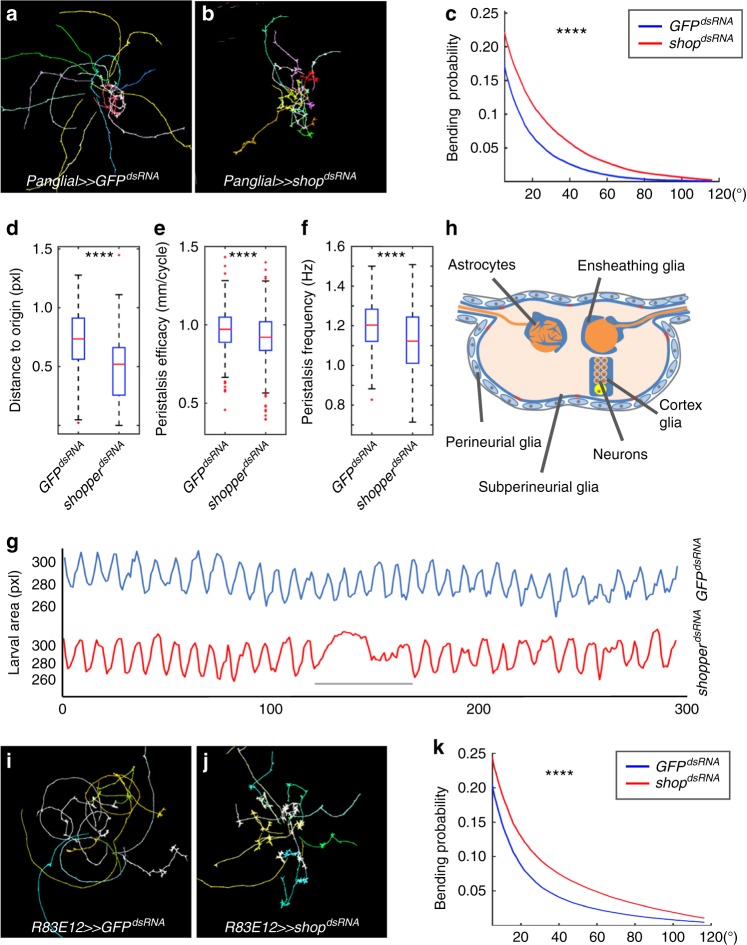Fig. 1.
shopper is required in ensheathing glia for larval locomotion control. a Locomotion trajectories of 15 third-instar larvae expressing GFPdsRNA in all glial cells (repo-Gal4, UAS-GFPdsRNA; repo-Gal4) were obtained as a control using FIMtrack. b Panglial expression of shopperdsRNA (7280 R-1) causes frequent head bending and abnormal peristalsis. c Quantification of the head bending phenotype. The accumulated head bending probability per frame is plotted for angles 5–120°. shopper knockdown animals (red line, n = 190 trajectories) generally bend more frequent than the RNAi control (blue line, n = 183 trajectories). d shopper knockdown larvae also move less far from the origin (0.73 cm vs. 0.52 cm). e The peristalsis efficacy in run phases is reduced. Control larvae (n = 524 run phases) advance 0.97 mm per peristalsis cycle on average, while shopper knockdown animals (n = 483 run phases) move 0.92 mm per peristalsis cycle. f In addition, shopper knockdown animals show a reduced peristalsis frequency (1.2 Hz vs. 1.12 Hz) in run phases. g Analysis of peristalsis frequency: the area covered by a larva in each frame is plotted against the frame number (temporal resolution: 10 frames per second). The peristalsis frequency in Hz corresponds to the number of local maxima of this function per second. Blue line: RNAi control animal. Red line: shopper knockdown animal. From frame 122 to 150 (gray bar), the larva exhibits a head bend. h Schematic cross-section of a third-instar larval ventral nerve cord showing all glial cell classes. i Locomotion trajectories of larvae expressing GFPdsRNA in ensheathing glial cells as controls (UAS-GFPdsRNA; R83E12-Gal4). j Expression of shopperdsRNA in ensheathing glial cells (UAS-shopdsRNA; R83E12-Gal4) caused frequent head bending. k Quantification of the head bending phenotype as shown in (c) (n = 329 vs. 369 trajectories, respectively). Box plots represent the first and third quartile, as well as the median. Whiskers contain values within 1.5 times of the interquartile range, outliers are marked as red crosses. >600 Frames of ~120 larvae (c, d, e, f) and ~180 larvae (k); ****p < 0.001, Wilcoxon rank-sum test. See supplementary Table 1 for statistical details

